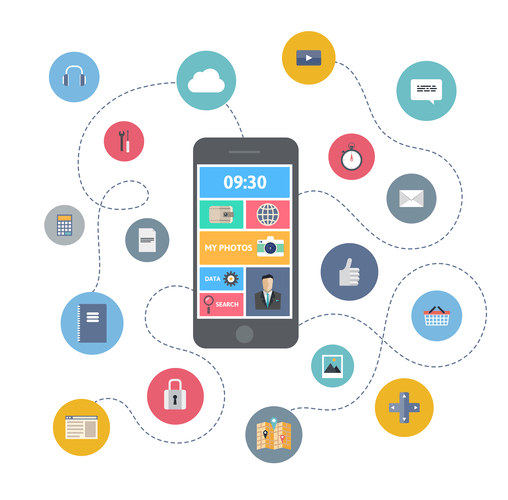The result is extra bodily distance between the processing and the sensors, but no further latency. Autonomous autos essentially operate as edge devices because of their vast onboard computing energy. These vehicles must have the flexibility to ingest knowledge from a huge number of sensors, perform real-time data analytics after which reply accordingly.

This implies that good grids demand real time electrical consumption and production data. These sorts of smart utility techniques usually combination data from many sensors, or want to face as much as distant deployments. The web of issues (IoT) is a system of interconnected gadgets, sensors, and software program elements that share information and knowledge. The energy of the IoT comes from its ability to collect and analyze massive volumes of knowledge from numerous sources.
The phrases fog computing and edge computing are sometimes used interchangeably, but they’re totally different. When administration will get less complicated, businesses frequently choose a centralized technique for their technological infrastructure. The installation of a dispersed assortment of heterogeneous fog gadgets introduces further compatibility and upkeep points.
Fog Computing And 5g
Intel estimates that the average automated car produces roughly 40TB of data every 8 hours it’s used. In this case, fog computing infrastructure is generally provisioned to use solely the info related for particular processes or tasks. Other large data units that are not timely for the desired task are pushed to the cloud. IFogSim can be an open-source fog computing simulator that may consider the efficiency of various fog computing architectures. IFogSim features a library of modules that may simulate numerous aspects of fog computing, corresponding to community topologies, system varieties, and software traits.

The cloud supplies the prolonged computing sources wanted for storing the huge quantity of knowledge that edge units produce however don’t use. It also offers more computing sources for further analysis, which makes the cloud a complementary ecosystem for fog computing functions. The major difference between fog and edge computing is that fog computing extends cloud services and connectivity to units fog computing definition on the fringe of the community. In contrast, edge computing brings computation and data storage nearer to devices at the edge of the community. Fog computing implementation includes either writing or porting IoT purposes on the network edge for fog nodes utilizing fog computing software program, a package deal fog computing program, or different tools.
Fog Computing
By distinction, in the traditional centralized model of cloud computing, information and applications are stored in a central location and accessed over the network. This is as a result of both fog and cellular edge computing aim to scale back latency and improve efficiencies, however they process information in barely different areas. Edge computing typically occurs directly where sensors are connected on gadgets, gathering data—there is a physical connection between knowledge supply and processing location. Another means to consider the difference between edge computing and fog computing is that fog is the standard that enables repeatable, structured, scalable efficiency within the edge computing framework. Edge computing is really a subtype of fog computing that signifies that data is generated, processed, and saved close together.
- Starting up with fog computing may be pricier as a result of it requires further hardware.
- Sensors within the device periodically notify the dealer about the quantity of power being consumed through periodic MQTT messages.
- By doing this, fog computing reduces the reliance on the cloud for these resource-intensive duties, improving efficiency and reducing latency (TechTarget, 2022).
- Fog computing is often used in cases the place real-time response is required, such as with industrial control systems, video surveillance, or autonomous vehicles.
- This is why the character of knowledge safety and privateness in fog computing offers smarter choices for more sensitive knowledge.
- Edge and fog computing are modern know-how approaches that are gaining recognition.
Although fog computing is a relatively recent addition to the cloud computing paradigm, it has gained substantial traction and is well-positioned for enlargement. The Fog World Congress is highlighting this development by highlighting this creating technology. Modern electrical networks are extraordinarily dynamic, responding to rising electricity demand by lowering output when it is not necessary to be economical. A sensible grid largely is dependent upon real-time information concerning electricity output and consumption to perform successfully. Unfortunately, many states are still not Industry 4.0 ready, and distant industrial amenities regularly lack the ultra-fast internet connections required for interconnectivity.
What’s Fog Computing In Easy Terms
Cloud, edge computing, and fog computing are a number of technological advances made over time. Factory robots — In industrial settings, fog computing allows for real-time evaluation of sensor information (like temperature or vibration) from machines. This helps predict gear failures before they occur, stopping expensive downtime and selling safety. Self-driving vehicles — Fog computing allows cars to process sensor information (like traffic lights and obstacles) domestically, enabling quicker decision-making for autonomous driving features.

In edge computing, the endpoint or a gateway contains intelligence and power. Fog computing is preferred over edge computing, based on proponents, since it’s more scalable and provides a greater general view of the network as a end result of it receives knowledge from a quantity of information points. Fog computing is a term for technology that extends cloud computing and services to the edge of an enterprise’s community. It allows knowledge, functions, and other resources to be moved nearer to, or even on high of, finish customers.
Under the context of Industry four.0, IoT develops into an important technology for industrial services. The group Smart Manufacturing Leadership Coalition (SMLC) is in command of the public-private effort “good manufacturing”. The objective is for industrial crops and logistics networks to autonomously prepare work operations whereas increasing power and manufacturing efficiency. Fog computing is often used in instances the place real-time response is required, similar to with industrial control methods, video surveillance, or autonomous autos. It can also be used to dump computationally intensive duties from centralized servers or to offer backup and redundancy in case of community failure.
A fog computing framework can have a wide selection of parts and features depending on its utility. It may embrace computing gateways that accept knowledge from data sources or diverse assortment endpoints such as routers and switches connecting belongings within a community. The rollout of the 5G network has improved this concern, however restricted availability, lower speeds, and peak congestion are all issues.

In edge computing, intelligence and energy could be in either the endpoint or a gateway. Proponents of fog computing over edge computing say it’s more scalable and gives a better big-picture view of the network as multiple information points feed information into it. Popular fog computing functions embody sensible grids, sensible cities, sensible buildings, car networks and software-defined networks. Sensors and units ship knowledge to a fog gateway, which might independently deal with some processing and decision-making. It then forwards more complicated duties or filtered data to the cloud for additional analysis. This strategy offers a great steadiness between real-time response and scalability.
Those nodes closest to the edge, or edge nodes, take in the data from other edge devices similar to routers or modems, and then direct no matter data they soak up to the optimal location for evaluation. Thus, the option of processing information close to the sting decreases latency and brings up various use circumstances where fog computing can be used to manage sources. Here, a real-time power consumption application deployed across multiple gadgets can observe the individual vitality consumption fee of every system.
Because an autonomous vehicle is designed to function without the need for cloud connectivity, it is tempting to think about autonomous vehicles as not being linked units. Even though an autonomous automobile should be succesful of drive safely in the complete absence of cloud connectivity, it’s still possible to use connectivity when available. Some cities are considering how an autonomous automobile may operate with the identical computing sources used to control traffic lights. Such a vehicle may, for example, perform as an edge device and use its own computing capabilities to relay real-time knowledge to the system that ingests site visitors data from other sources. The underlying computing platform can then use this data to operate visitors indicators extra effectively. Any device having processing storage and community connectivity could be a fog node in fog computing and positioned on a railroad observe or a gas station.
Processing data at the stage of the automobile utilizing a fog computing technique by way of an onboard vehicle processing unit is an important a part of sharing the constrained cellular bandwidth. It is greatest to research the information within the remote place where it was created, due to this fact fog computing is ideal for this. In different cases, the information isn’t from a single sensor however rather from a collection of sensors, such as the electrical energy meters in a neighborhood. In these cases, it is preferable to process and mixture the info locally somewhat than to transmit the raw data in its entirety to keep away from overburdening the data transmission.

In fog computing less knowledge demands instant cloud storage, so customers can as an alternative subject knowledge to strategic compilation and distribution rules designed to spice up efficiency and cut back costs. Fog computing enables you to deploy functions nearer to finish users, which reduces community congestion and improves performance https://www.globalcloudteam.com/ for these functions. If real-time response and a centralized view are crucial, fog computing may be the higher match. For simpler tasks and limited power/connectivity situations, edge computing might be sufficient. Ginny Nichols, a product line manager for Cisco, first used the phrase “fog computing” in 2014.
Fog computing contains edge processing as well as the necessary infrastructure and community connections for transporting the info. By moving storage and computing methods as near as possible to the purposes, parts, and units that want them, processing latency is removed or greatly reduced. This is very necessary for Internet of Things-connected gadgets, which generate massive amounts of knowledge. Those devices expertise far much less latency in fog computing, since they’re nearer to the data source. The objective of edge computing is to bring the info sources and units nearer collectively, eliminating the time and distance to process. In concept, this in turn improves performance and pace of functions and devices.

